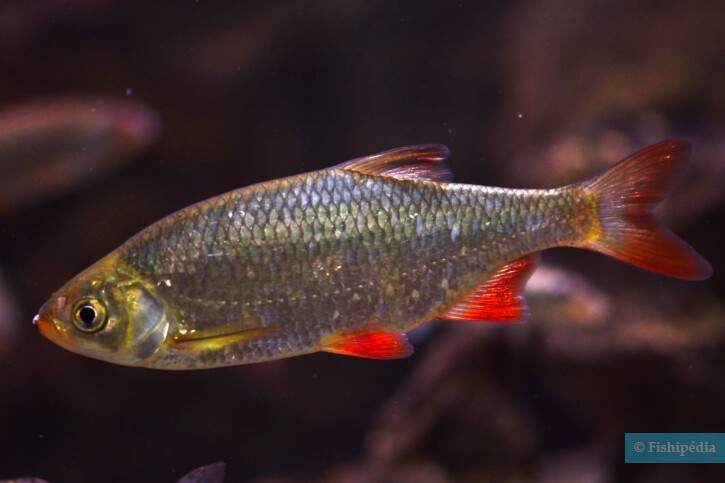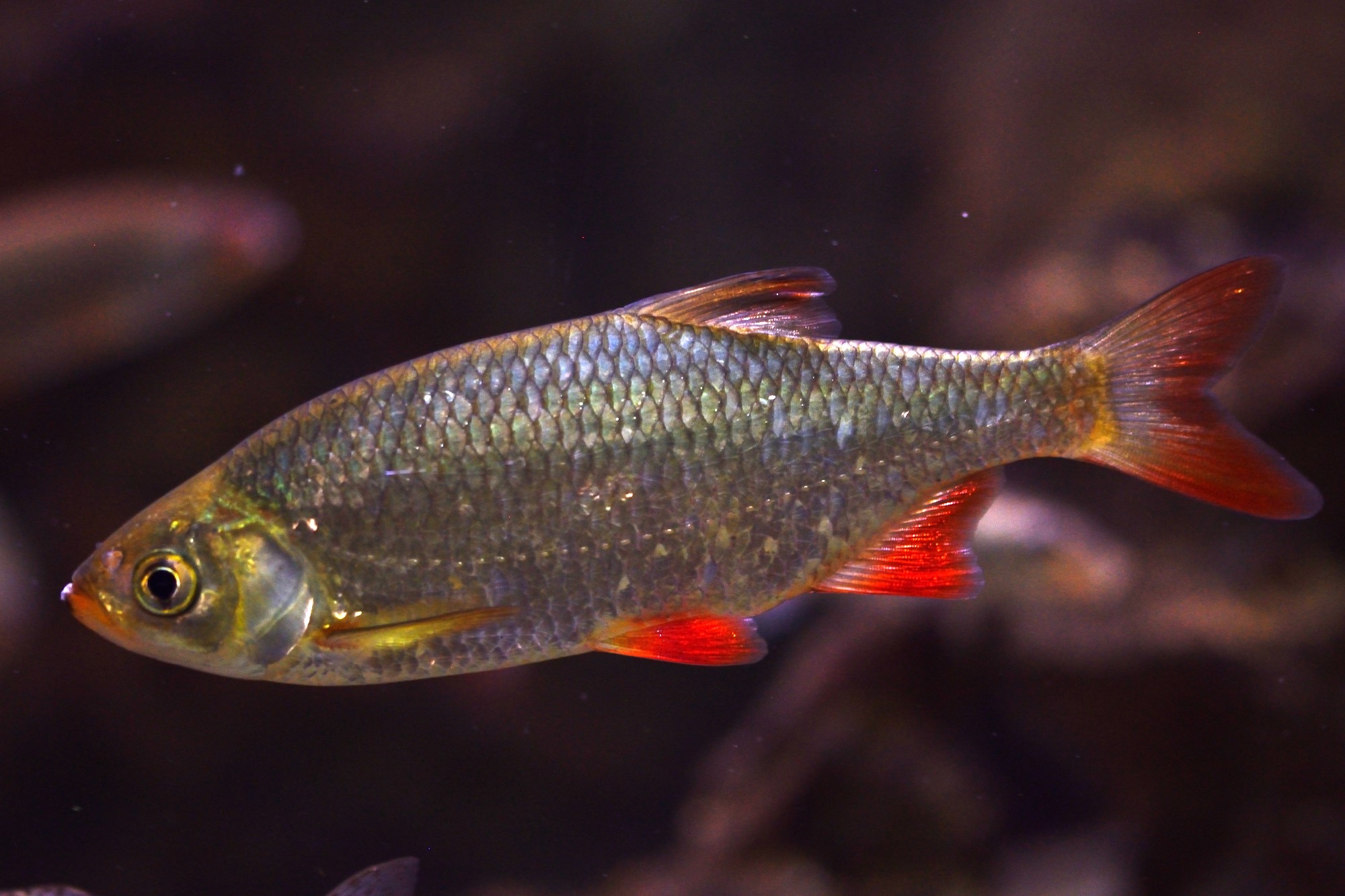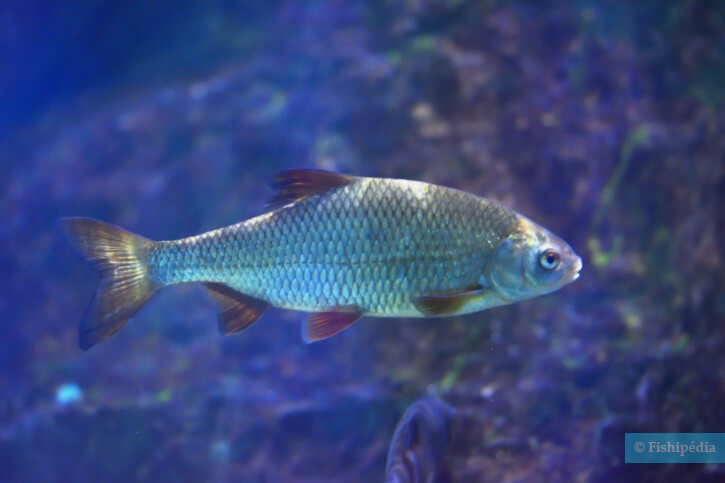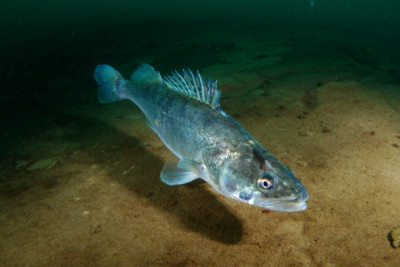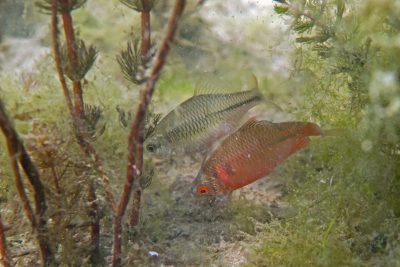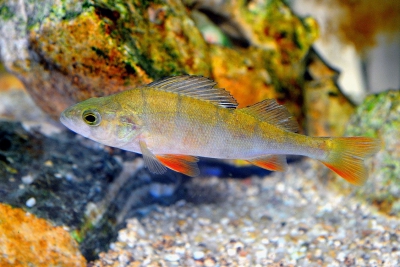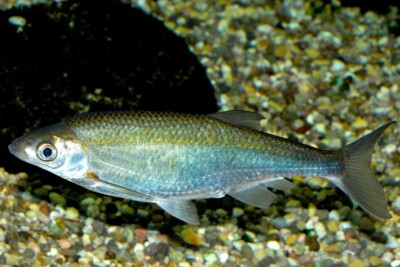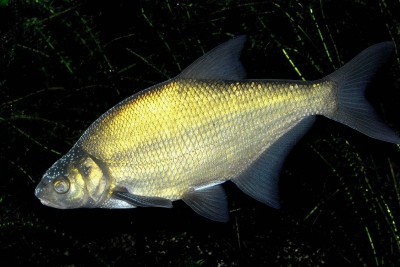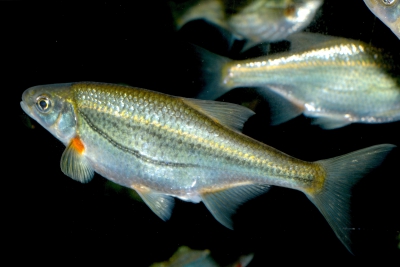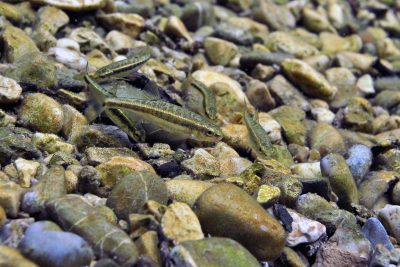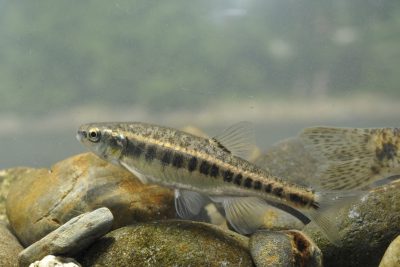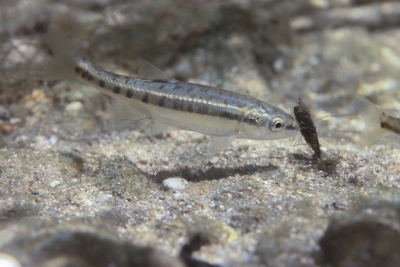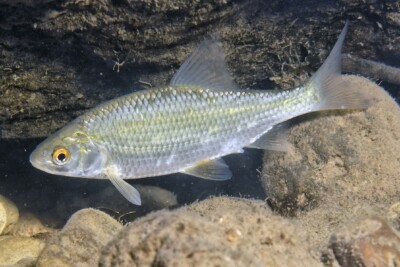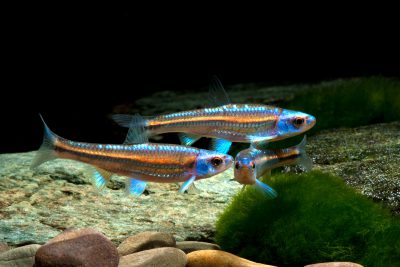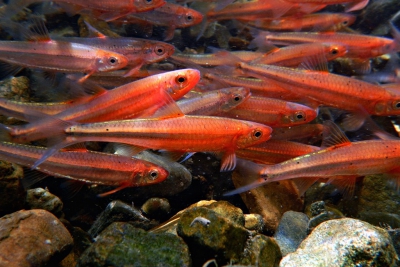Introduction
Scardinius erythrophthalmus, commonly known as rudd, is a fresh water fish from the Europe.
This sheet is currently being prepared. The texts currently proposed come from our data model or are being drafted. To request priority for this content, you can write to us HERE.
Who is it?
Morphology
-
Average size20 cm
-
Maximum size60 cm
-
Longevity19 year
-
Average size20 cm
-
Maximum size60 cm
-
Longevity19 year
How to recognize This fish ?
The rudd measures between 20 and 60 cm. This fish is bicolore with a predominantly rouge and argent body.
Sexual dimorphism
The females have a more rounded abdomen than the males, they are generally stockier. This characteristic is exacerbated in the period of reproduction.
Behaviour & Life cycle
-
dietomnivorous with herbivorous tendency
-
Sociabilitygregarious
-
territorialNo
-
Way of livingdiurnal
The rudd is a fish gregarious naturally found at mid-depth and near the bottom. This species is omnivorous with herbivorous tendency .
n general, this species does not care much about other animals crossing its path.
Reproduction
-
Reproductionovipare qui dépose ses Œufs dans la végétation
The rudd is a fish ovipare qui dépose ses Œufs dans la végétation.
Harmless species
This species does not represent any particular threats to humans when encountered in its natural environment.
Origin and distribution
What is its habitat?
Natural environment characteristics
-
Temperature2 - 22 °C
-
pH (acidity)7 - 7.5
-
gh (hardness)10 - 15
-
FlowSlow and Stagnant
Biotope presentation
The rudd is most often found at a depth between 0m and 2m. However, it is not impossible to find this species at other depths. This animal evolves in areas characterized by a strong presence of vegetation (aquatic and marsh plants, decaying organic matter, roots...).
This species lives near large roots, in which it can find refuge in case of danger. This type of habitat is often found not far from the banks.
Species of the same biotope
To go further
Sources & Contributions
Participation & Validation
The Fishipedia team and specialist contributors are committed to providing high-quality content. However, although the information comes from scientific sources or testimonials from specialists, the cards may contain inaccuracies.
Translation
Translation done with the valuable contribution of our translators, who make this information available to a wider audience. We sincerely thank them for their commitment.
Scientific partners
Tags
Species of the same family
Species of the same biotope
